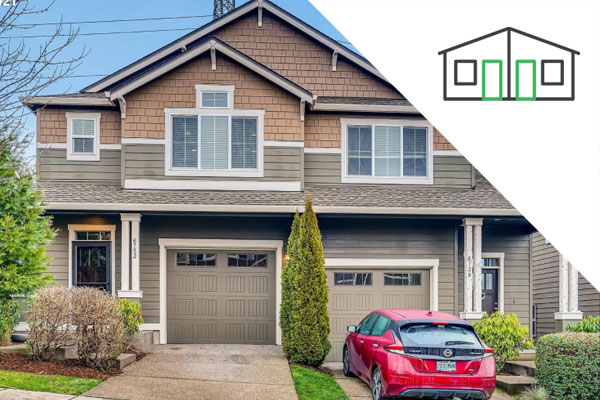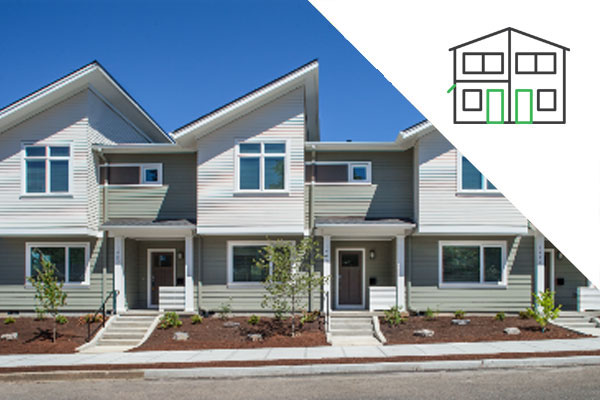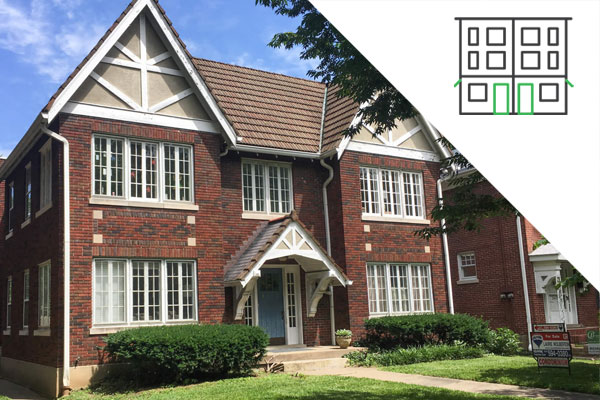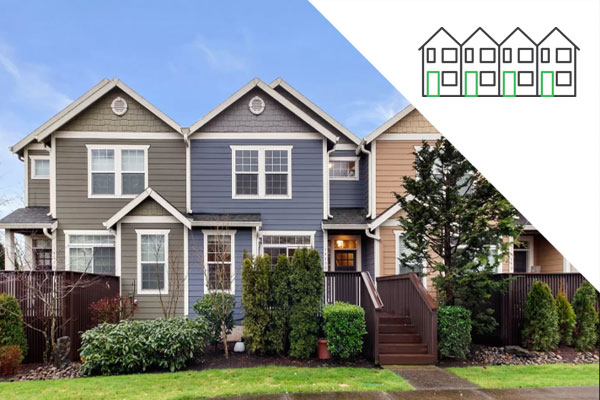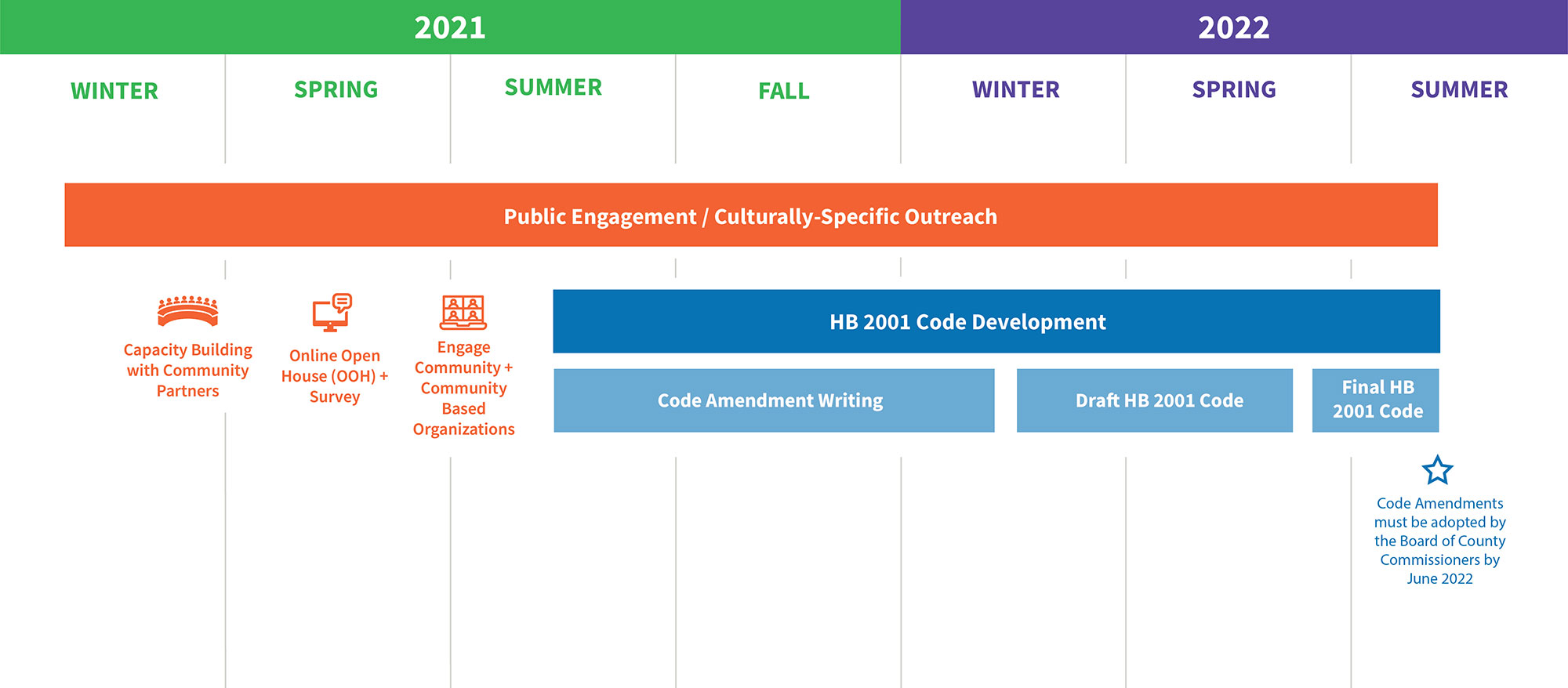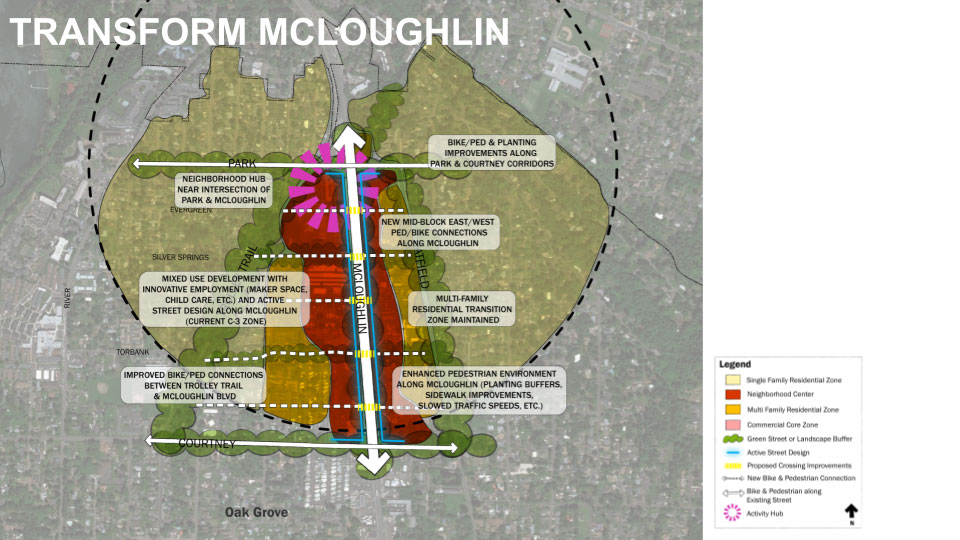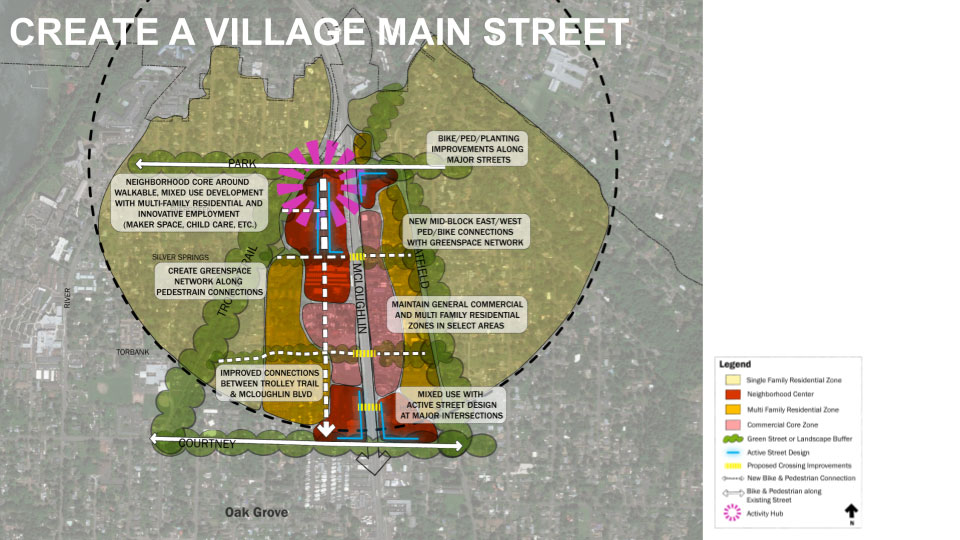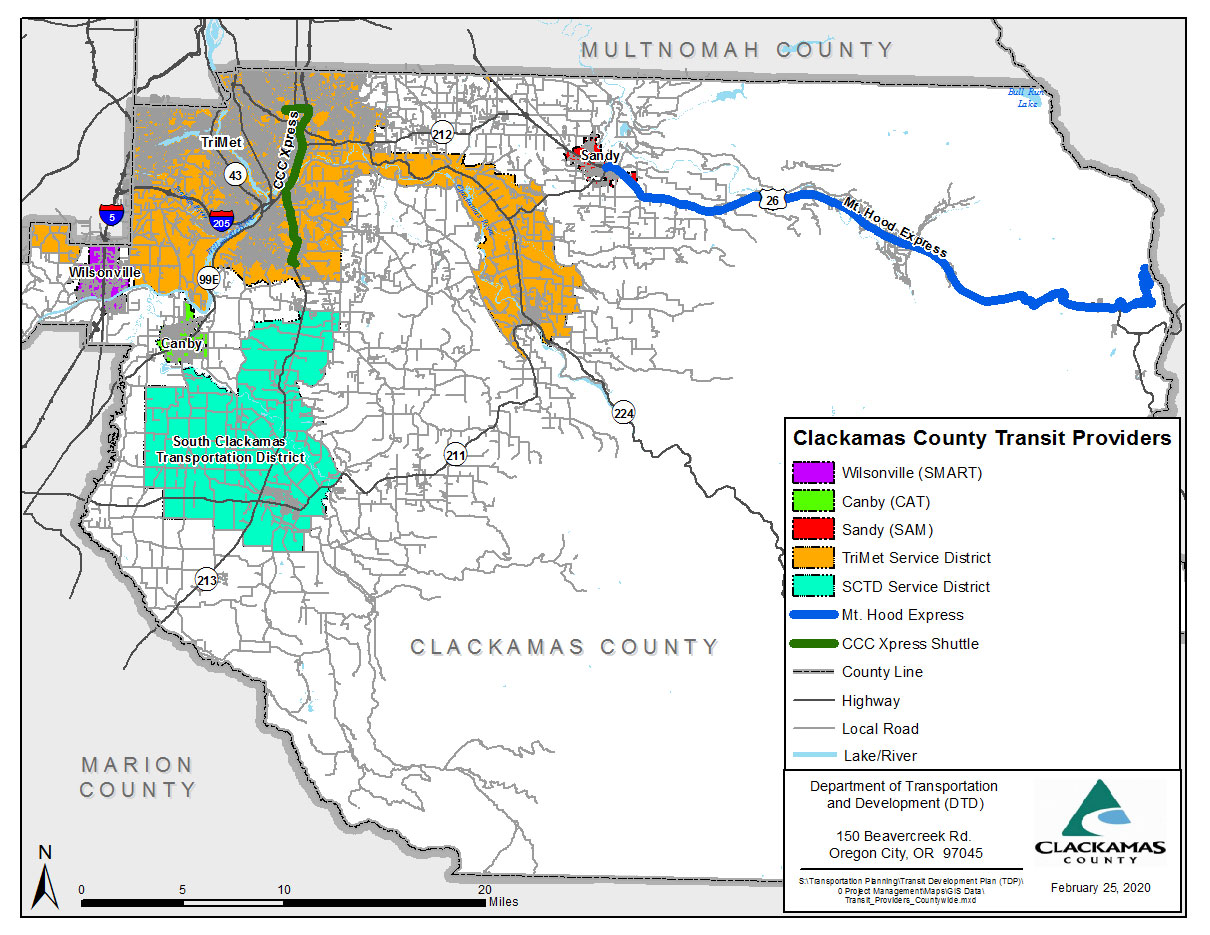Planning and Zoning
Hearings Officer: Z0346-23-ZAP & Z0347-23-SL - Feb. 15, 2024
Historic Review Board - Jan. 11, 2024
Hearings Officer: Z0367-23 - Jan. 11, 2024
Hearings Officer: File Z0123-23 - Dec. 14, 2023 - (postponed from July 13)
Expanding Housing Choice in Clackamas County
HB 2001 Implementation Project
Update 7/1/22
As of July 1, 2022, the new middle housing rules are in effect. Learn more.
Update 6/6/22
On June 2, 2022, the Board of Commissioners adopted amendments to the Zoning & Development Ordinance (ZDO) and Comprehensive Plan to allow for middle housing (duplexes, townhouses, triplexes, quadplexes and cottage clusters) on urban residential land in unincorporated Clackamas County. The amendments will be effective July 1, 2022.
Approved documents:
- Adoption Ordinance
- Comprehensive Plan Amendments
- Zoning and Development Ordinance (ZDO) Amendments
- Findings of Consistency with Statewide Goals and Guidelines
Questions about developing middle housing? Contact Principal Planner Martha Fritzie at mfritzie@clackamas.us or 503-742-4529.
Background
Expanding housing choice in Clackamas County means providing more housing types and options for residents. Housing in Clackamas County is becoming less affordable, and House Bill 2001 (HB 2001), approved by the state legislature in 2019, will allow property owners to build up the supply of housing — resulting in a wider range of housing types that can provide more affordable housing options in urban, unincorporated Clackamas County.
State law requires that the county amend its Zoning and Development Ordinance (ZDO), and, if necessary, Comprehensive Plan, by June 30, 2022, to allow for this development of middle housing in urban unincorporated, residential zones.
For information about county land use efforts underway to support housing throughout the county, go to Land Use Housing Strategies.
House Bill 2001 (HB 2001)
House Bill 2001 requires Oregon cities and counties to allow “middle housing” in urban residential zones that already allow houses. The purpose of the state law and the county’s HB 2001 Implementation Project is to increase the amount of lower-cost market-rate housing available in residential areas. Since middle housing — townhouses, duplexes, cottage clusters, quadplexes, etc. — can be less expensive to build than conventional single-family houses and new apartment complexes, it may be possible to charge lower rents or sale prices. Also, middle housing will be allowed in more locations than apartment complexes are allowed in today, which may result in the development of more new housing units. The law does not eliminate the option to build single-family homes.
Types of Middle Housing
Middle housing includes duplexes, triplexes, quadplexes (also known as fourplexes), townhouses, cottage clusters (several small houses centered on a common area such as a lawn or courtyard) and accessory dwelling units (ADUs).
Clackamas County already allows ADUs per state law. (ADUs are a secondary house or apartment unit that is on the same lot as a larger, primary house.)
Examples
Meetings
| 2022 | |
|---|---|
| June 2 | Board of Commissioners Business Meeting |
| May 11 | Board of Commissioners Land Use Hearing |
| April 27 | Board of Commissioners Land Use Hearing |
| March 28 | Planning Commission Public Hearing |
| March 14 | Planning Commission Study Session |
| Feb. 22 | Online Video Chat with Staff about Proposed Middle Housing Codes video |
| Feb. 2 | Board of Commissioners Planning Session |
| Jan. 24 | Planning Commission Study Session materials |
| 2021 | |
| Nov. 9 | Board of County Commissioners Issues Session materials |
| Oct. 25 | Planning Commission Study Session materials |
Documents
- Factsheet
- Frequently asked questions
- Community Survey Results, June 2021
- Presentation to Community Leaders Meeting, Feb. 7, 2022
Park Avenue Next Steps: Considering Alternatives
Let us know your preferences for the future of the Park Avenue area by taking our survey.
Take the Survey Responda la encuesta en español
Watch the Webinar
Check out these videos from the webinar:
WHAT: How can we make a more walkable, mass-transit friendly community? Clackamas County is working with Oak Grove neighbors to create updated land-use development and design standards for the area near the Park Avenue Max Station. The goal will be to support economic growth and protect neighborhoods around this area.
WHERE: Within a half mile of the light rail station at Park Avenue and McLoughlin Boulevard in Oak Grove, just south of the city of Milwaukie.
GOALS:
- Increase employment opportunities, promote innovative business ventures and enhance access to business and community services, amenities, while remaining sensitive to existing businesses.
- Increase the diversity and accessibility of housing choices adjacent to transit, along McLoughlin Boulevard, and along the near side streets, while maintaining sensitivity to existing residences.
- Provide safe locations, crossings and connections for walking, biking, transit and parking.
- Cultivate a heart and hub of neighborhood activity supported by a network of community gathering spaces that are safe and welcoming both day and night.
- Treat natural systems as a benefit and an integral part of our community identity by preserving, promoting and enhancing native natural elements at a variety of scales.
- Promote resilient, sustainable systems and infrastructure.
What we heard so far: We learned from people who attended our last workshop in February that they interested in the following community features to be a key part of future design of the area.
Jobs opportunities
- Local grocery and small businesses to serve the neighborhood
- Diverse choices jobs and businesses
- Retail
- Childcare
Housing
- More housing density, but designed appropriately for the area
- A range of housing types in varying densities (such as duplexes, apartments and co-housing communities
- Housing for workers
- Housing development that prioritizes accessibility for pedestrians and bicyclists, with flexible parking solutions, green spaces and required sustainability features
Transportation
- Improve access to Park Avenue station area
- Promote equitable access to all modes
- Improve safety along the Trolley Trail
Community Gathering Spaces
- Space for food trucks, dog parks, places to play and have events
- Encourage open space around housing development
Green Spaces and Natural Features
- Preserve existing trees and natural features
- Planted median on Highway 99E (McLoughlin Boulevard)
- Encourage courtyards and green roofs
Sustainability and Climate Resiliency
- Eco-sensitive housing density
- Community gardens to support surrounding housing
- E.V. charging and/or car share
Two alternatives to consider
A framework plan is a map that shows a 20-year vision and big ideas for the future of a neighborhood. The framework plan helps inform design and development standards, but it is not a zoning code and it is flexible enough to adapt to changing conditions in the community.
What is in a framework plan?
The framework plan provides suggestions for locating the following elements:
- Types of development (housing, job opportunities, businesses, etc.)Pedestrian and bicycle improvements (like paths, sidewalks, etc.)
- Street crossing improvements
- Hubs of neighborhood activity and community gathering spaces
- Opportunities for landscape and planting improvements
|
Option A |
Option B |
|
The Transform McLoughlin alternative is focused on improving conditions along McLoughlin Boulevard to make it more conducive to development and inviting to pedestrians. It maintains McLoughlin as the primary circulator for auto-oriented and bike/pedestrian traffic, but offers substantial improvements along McLoughlin to make it safer and more accessible for everyone.
|
The Village Main Street alternative concentrates mixed-use development (retail and housing), and bike and pedestrian traffic along a new corridor parallel to McLoughlin, between McLoughlin and the Trolley Trail and adjacent residential development.
|
Now, we’d like give you a chance to let us know your preferences for the future of the Park Avenue area. Just click on the Survey link below. Thank you!
Land Use Housing Strategies
Supporting the development of a more affordable variety of housing in unincorporated Clackamas County
The Planning & Zoning Division has compiled information and data to develop a three-phase strategy to help ensure that the county’s Comprehensive Plan and Zoning & Development Ordinance (ZDO) support meeting the growing need for more housing options in Clackamas County. The details are available in Long-Range Planning Issue Paper 2020-1, Housing Strategies Related to Comprehensive Plan and Zoning & Development Ordinance Updates, Feb. 11, 2020.
Board approves code amendments to expand housing options
On Nov. 3, the Board of County Commissioners approved several changes to the Zoning and Development Ordinance (ZDO) to encourage the development of more multifamily housing in urban unincorporated Clackamas County. Specifically, amendments were approved that will:
- Provide residential developers with additional entitlements (such as more units) in exchange for providing housing that is affordable for low-income households
- Increase maximum allowed housing density in some unincorporated commercial zones from 25 units per acre to 60 units per acre;
- Allow a 20 percent density bonus for housing in mixed-use development in those unincorporated commercial zones;
- Reduce overall parking requirements for multifamily developments in unincorporated commercial and residential areas, and
- Reduce parking requirements for multifamily developments within ¼ mile walking distance of a light-rail station.
The BCC action, which implements several of the recommendations from the 2019 Housing Affordability and Homelessness Task Force, was shaped during came at the end of a nearly The action came at the end of a nearly two-year-long process of studying and gathering input on these proposals, as well as public hearings before the Planning Commission and Board of Commissioners.
More information about the actions taken is available in the material provided for the Oct. 6 and Nov. 3 Board Land Use Hearings.
The Need
Housing in Clackamas County is becoming less affordable. Exacerbating this problem is a deficit in buildable residential land in the urban unincorporated area. Based on estimates in the Clackamas County Regional Housing Needs Analysis (HNA) from September 2019, unincorporated Clackamas County lacks residentially-zoned land for as many as 5,000 housing units needed in the next 20 years, over half of which would be multi-family units to meet anticipated demand.
The analysis in the HNA identifies a need for additional housing types for a range of income levels and at a range of sizes, in part, to respond to the preferences of the Baby Boomers and Millennials that make up a growing portion of the population. One challenge is that, while the county has a need for a wide range of housing solutions to serve households at varying income levels, there remains a tendency for low-density residential development to dominate the new construction market.
To meet the range of needs identified in the HNA and facilitate the development of housing that better serves the needs of all the county’s residents, several strategies need to be deployed:
- Through implementation of programs administered by the county’s Department of Health, Housing and Human Services (H3S) and non-profits organizations, and
- Through changes to the land use regulations implemented by the Department of Transportation and Development (DTD) through the Planning & Zoning Division.
Strategies
Phase 1
- Housing density in commercial zones
- Land use regulations often include limits to the number of dwelling units that can be built on a particular piece of land. This limit, described as a number of units per acre, is referred to as “housing density.” One way to facilitate more housing development is to allow for more housing density. The county is considering increasing the housing density allowed for multi-family housing developed on certain lands zoned for commercial uses like retail and shops, services, offices, restaurants and lodging, child care and adult daycare, entertainment, etc.
- Currently, the Clackamas County code allows for multi-family homes to be built in most commercial zones, but in many areas restricts the density of that housing to no more than 25 units per acre. Increasing the number of housing units allowed per acre close to commercial areas and job centers could substantially improve housing opportunities for people who want, or need, to be closer to such services.
- Multi-family parking requirements
- Parking requirements can impact the type and density of housing developers can afford to build and people can afford to rent or buy. Constructing required parking can be a significant cost for multi-family housing developments, which then can result in increased rents or sales prices. In addition, reducing the number of required parking spaces could provide enough space for more housing units on a property. Not providing enough parking, however, could lead to people seeking parking on neighboring streets, which can be a problem for everyone in the area.
- Currently, Clackamas County code requires all multi-family residential developments to provide 1.25 to 1.75 parking spaces per housing unit, depending on the number of bedrooms. The code does not allow for a developer to ask for a lower parking requirement even if the development will be serving low-income households with fewer cars, or if the development is located near a public transit station.
- Modifying parking standards could provide expanded housing opportunities.
- Affordable housing bonus
- Some jurisdictions allow a developer to build more housing units or a larger building and have flexibility in other standards (such as parking, landscaping, etc.) in exchange for ensuring that some of those housing units are affordable for lower income households. This type of flexibility is commonly referred to as an “affordable housing bonus”.
- Currently, Clackamas County has a minimal and rarely used affordable housing bonus program -- 1 additional unit allowed for each affordable unit, up to 8% of base density. (For example, if the allowed density is 100 units and a developer proposes to make eight or more units affordable, they could add up to eight units to the project.) We are considering ways to provide a more meaningful affordable housing bonus that would provide incentives for developers to build affordable units.
- Transitional shelters
Phase 2
- Middle housing (HB 2001)
- House Bill 2001 (HB 2001), passed by the state legislature in 2019, requires the county to:
- allow a duplex on any urban lot zoned for a detached single-family home, and
- allow triplexes, quadplexes, cottage clusters and townhouses in urban areas zoned for a detached single-family home.
- Required under state law; effective July 1, 2022
- House Bill 2001 (HB 2001), passed by the state legislature in 2019, requires the county to:
- Clear and objective standards (S1051)
- The county is required to have a “clear and objective” path for all types of housing development. This requires an audit of the county’s standards for development of individual housing units and for residential land divisions.
- Required under state law (Senate Bill 1051, approved in 2017)
- Comprehensive Plan policies for rezoning in low density residential districts
- Comprehensive Plan text amendments to clarify zone change policies and potentially restrict zone changes in urban low-density residential areas.
Context for strategies
The strategies were developed within the context of:
- Current local, regional and state regulatory framework
- Available resources, including staff time and budget
- The Clackamas County Regional Housing Needs Analysis from September 2019
- Identified needs
- Recommendations
- Does the strategy increase places for new housing units?
- The Housing Affordability and Homelessness Task Force from 2018-2019
- Does the strategy address task force recommendations and policies identified to address housing affordability and homelessness in the county?
- Equity, including:
- Does the strategy improve access to housing?
- Does the strategy improve housing stability?
- Does the strategy limit potential for displacement?
- Legislative mandates, including:
- Senate Bill 1051 (2017)
- House Bill 2001 (2019)
- The 2019-21 Long-Range Planning Work Program
Meetings
Board and Planning Commission
| 2021 | |
|---|---|
| Dec. 2 | Board of Commissioners Business Meeting 10 a.m. materials |
| Nov. 3 | Board of Commissioners (for deliberation only) 9:30 a.m. materials |
| Oct. 6 | Board of Commissioners Public Hearing 9:30 a.m. materials |
| Aug. 23 | Planning Commission Public Hearing 6:30 p.m. materials |
| July 12 | Planning Commission Study Session 6:30 p.m. materials |
| June 15 | BCC Policy Session 2:30 p.m. to 3:30 p.m. packet video |
| April 28 | BCC Planning Session 9:30 a.m. to 11:30 a.m. packet video |
| 2020 | |
| June 30 | BCC Policy Session Update on Rulemaking for House Bill (HB) 2001 (2019), related to “Middle Housing” and HB2003 (2019), related to “Needed Housing" (Virtual Meeting) |
| Feb. 11 | BCC Policy Session materials |
| Jan. 27 | Planning Commission meeting background presentation |
| 2019 | |
| Dec. 10 | Housing Affordability and Homelessness Task Force Priority Recommendations and Final Report materials |
| Update of Department of Transportation and Development Housing Strategies Project materials |
|
| Sept. 23 | Joint Board of County Commissioners / Planning Commission Work Session memo presentation |
Technical Working Group
| 2021 | |
|---|---|
| Jan. 21 |
3 p.m. to 5 p.m. agenda Phase 1 Strategies Update Housing Strategies and Health Equity Lens Survey Results Meeting Notes, Oct. 21, 2020 |
| 2020 | |
| Oct. 21 |
1 p.m. to 3 p.m. |
| Sept. 2 | 4:30 p.m. to 6 p.m.
|
Public Engagement
Equitable public engagement and involvement are integral to the success of this project and will take place throughout all phases. The primary public engagement objectives are to:
- Understand the community’s priorities and concerns with regard to potential changes that may take place in their neighborhoods as a result of implementation of these strategies.
- Collaborate with community partners to advance socioeconomic, racial and transportation equity in Clackamas County to create a set of potential solutions that will be responsive to the different needs of diverse communities.
Lay the groundwork for updating policies and regulations to ensure the updates will be responsive to the needs of urban communities in the county. - Help ensure successful passage of code amendments through the adoption process.
There will be many varied opportunities for interested people and organizations to be involved with this important project, including community work groups, webinars, online questionnaires, presentations to community groups, etc. For more information, contact Martha Fritzie at mfritzie@clackamas.us.
Learn More
Interested in learning more? Want to know about future meetings (virtual or otherwise) and actions related to this project? Let us know who you are and how we can reach you and we’ll add you to our email list.
Just send an email to Ellen Rogalin at ellenrog@clackamas.us with your name and email address. Thank you!
Resources
- Presentation to Jennings Lodge CPO, Feb. 23, 2021
- Presentation to Oak Grove Community Council, Jan. 27, 2021
- Results of Online Survey, December 2020
- Presentation to Planning Commission, Nov. 9, 2020.
- Clackamas County Long-Range Planning Work Program (2019-20)
- Clackamas County Metro-Area Residential BLI Web Map Overview (Feb. 6, 2020)
- Clackamas County Regional Housing Needs Analysis, 2019 (September 2019)
- Exploring the Factors that Drive Displacement Risk in Unincorporated Clackamas County: With a Special Look at Manufactured Housing Communities (September 2019)
ECONorthwest - Housing Strategies Related to Comprehensive Plan and Zoning & Development Ordinance Updates
Long-Range Planning Issue Paper #2020-1, Clackamas County, Feb. 11, 2020 - Invisible Walls: Housing Discrimination in Clackamas County
Portland State University, Spring 2019 - Oregon House Bill 2001 (2019) – Housing Choices
- Oregon Housing Resources
Oregon Department of Land Conservation & Development - Oregon Senate Bill 1051 (2017)
- Oregon’s Statewide Housing Plan
Oregon Department of Housing and Community Services - Report to Board of County Commissioners (Dec. 9, 2019)
Clackamas County Housing Affordability and Homelessness Task Force, Dec. 9, 2019
Clackamas County Transit Development Plan
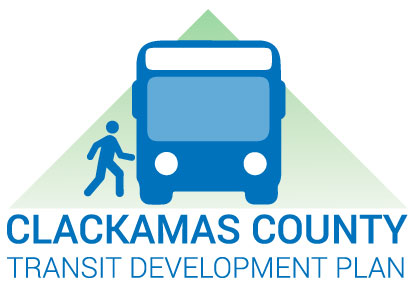 Clackamas County’s first-ever Transit Development Plan was approved by the Board of County Commissioners on April 29, 2021.
Clackamas County’s first-ever Transit Development Plan was approved by the Board of County Commissioners on April 29, 2021.
The plan sets the stage for improved and increased transit throughout the county. With seven transit service providers in Clackamas County, there are still large areas of the county with no transit service, and existing service varies in frequency, access and connectivity. The final plan is being used to guide transit investments in the county.
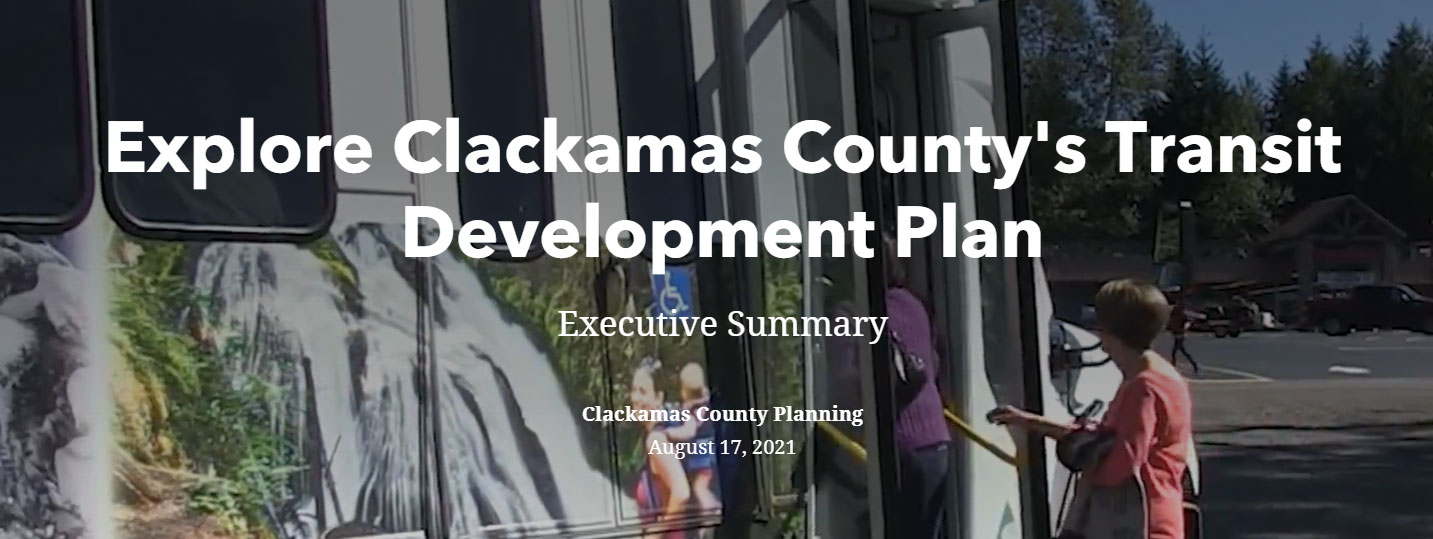
Explore Our New Transit Development Plan (storyboard)- Plan vision: Provide guidance for an equitable, safe, convenient and connected transit network throughout Clackamas County that will support the health and well-being of Individuals, communities, the economy and the environment.
- Plan recommendations
Areas of Focus
- Inside TriMet’s service district (orange area of the map)
- Includes most cities inside the Metro urban growth boundary (UGB), extending to Estacada; including a large portion of the rural area along Stafford Road
- Work to be done: detailed analysis and level of service information
- Unincorporated Clackamas County with no transit service (gray area of the map)
- Develop recommendations for how transit service providers can connect through these areas
- Work to be done: Review connections in areas outside the jurisdictions of current transit providers:
Transit Service Providers in Clackamas County
- TriMet – northwestern portions of the county, with an extension to Estacada
- Sandy Area Metro (SAM) – Sandy
- Canby Area Transit (CAT) – Canby
- South Clackamas Transit District (SCTD) – Molalla
- South Metro Area Regional Transit (SMART) – Wilsonville
- Mt. Hood Express – Sandy to Timberline Lodge
- CCC Xpress Shuttle – Clackamas Community College (service to Oregon City and Harmony campuses from Clackamas Town Center MAX Station)
- #ClackCo Connects - Clackamas County
Project Advisory Committee
Stakeholders and residents from throughout the County met regularly to review project information and plans, make suggestions and recommend the final Transit Development Plan. Meetings will be open to the public and include time for public comment.
Meeting Schedule
| Jan. 26, 2021 5 p.m. to 6:30 p.m. |
Held via Zoom agenda presentation summary |
| Nov. 4, 2020 | Held via Zoom agenda presentation summary |
| July 28, 2020 | Held via Zoom agenda presentation summary |
| May 12, 2020 | Held via Zoom agenda presentation summary |
Project Advisory Committee (PAC) Members
| Name | Organization |
| Cristina Reynaga | South Clackamas Transportaiton District Board of Directors |
| Linda Howland | South Metro Area Regional Transit Dial-a-Ride Steering Committee |
| Laura Edmonds | North Clackamas Chamber of Commerce |
| Michelle Emery | Todos Juntos Transit Provider |
| Glenn Koehrsen | Aging Services Advisory Council |
| Stephen McMurtrey | Clackamas County Housing Authority |
| Jackson Calhoun | Rex Putnam Earth Club |
| Bobbi Bryan | Redland-Viola-Fischers Mill CPO |
| Maggie Anderson | Clackamas Community College Student |
Background
HB 2017-Keep Oregon Moving*, created a new funding source for transit operations and capital expenditures. Aside from the Mt. Hood Express, Clackamas County is not a transit provider. However, areas outside of a transit district or service area also have the opportunity to receive funding for transit, contingent upon having a plan that identifies priority transit needs and investments. The small city transit providers have worked closely to coordinate an “out-of-TriMet district” set of investments for the initial TriMet STIF plan. During this planning process, a need was identified to create a single document addressing the connections between service provider areas, and to identify ways in which coordination and cooperation can be improved throughout the Study Area.
*HB 2017-Keep Oregon Moving, created a new funding source for transit operations and capital expenditures. Areas outside of a transit district or service area have the opportunity to receive funding for transit, contingent upon having a plan that identifies priority transit needs and investments.
In December 2018, Metro approved an updated Regional Transit Strategy with additional guidance on providing better transit service. The Service Enhancement Plans and the Regional Transit Strategy, as well as priority service improvements identified in the TriMet STIF plan, will be the foundation for the work of the CCTDP within the TriMet service area.
In June 2018, the County hosted a Transit and Housing Workshop where professional staff from jurisdictions throughout the Study Area discussed actions needed to increase access to housing and jobs through better transit service. These concepts will be explored further during the Project to provide guidance on ways to make transit service a more viable option to choice riders, identify the types of transit facilities needed to support transit connections, bring forward innovative ways to provide service in rural and suburban locations, and provide input into land use actions that support transit.
Detailed Project Objectives
- Assess the transit level-of-service to identify gaps in transit service and coverage;
- Assess the connections between transit and land use and identify potential actions to improve land use transit-supportiveness;
- Identify opportunities to meet the transportation/transit needs of vulnerable populations and to provide access to destinations that are important to vulnerable populations;
- Identify transit equity issues that exist for low-income households and identify connections to provide better access to employment and housing for transit dependent populations;
- Enhance coordination between transit service providers and provide guidance on seamless access to transit options regionally by evaluating technology integration and fare uniformity;
- Provide strategic guidance for service improvements that will address the findings in the above assessments and improve the integration between systems from a County perspective;
- Address issues emerging from Metro’s 2018 Regional Transit Strategy, such as implementation of the enhanced transit concept, transit expansion and first/last mile connections;
- Integrate a range of transit options, such as shuttles, express service, vanpools, micro transit and Transportation Network Companies (i.e., Uber and Lyft);
- Identify priority transit service enhancements that can be integrated into future STIF plans and TriMet planning, and other planning work or funding opportunities; and
- Preserve the function of state highways by expanding regional public transit availability and reducing the number of single-occupancy vehicles on the road.
Just the Facts
Funding: $175,200 from the federal Fixing America’s Surface Transportation Act (FAST Act), through a Transportation & Growth Management grant from the Oregon Department of Transportation.
Timeline: January 2020 – January 2021
For more information:
- Contact Brett Setterfield, bsetterfield@clackamas.us, 503-742-4511 or
- Visit www.clackamas.us/planning/transit to stay up-to-date on project process and opportunities to provide feedback.
 Translate
Translate






